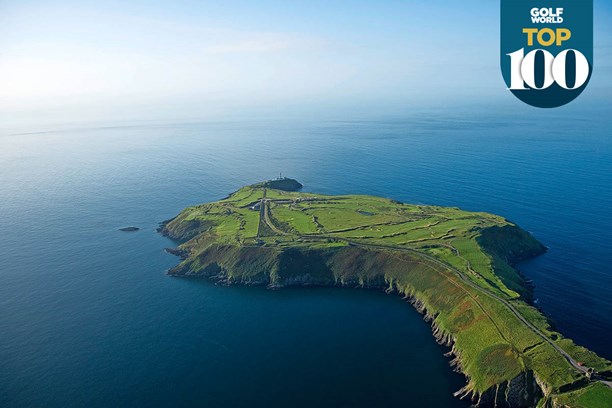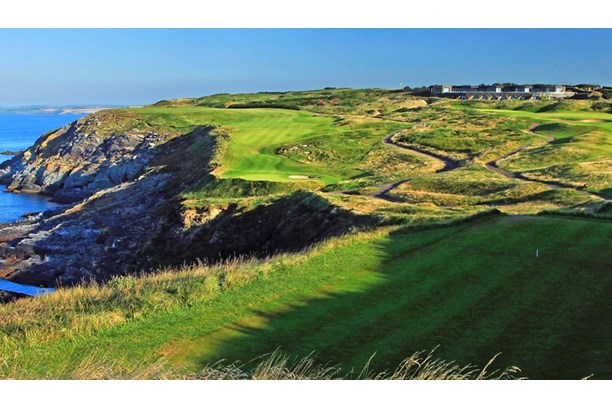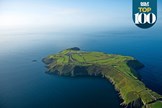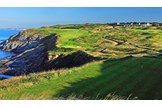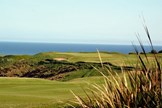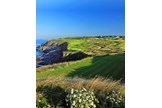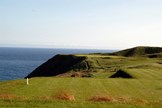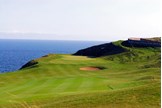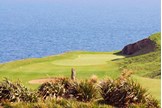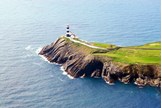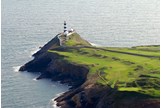Old Head Golf Club
Last updated:
What we say
No one can deny that Old Head is one of the best golf courses in terms of sheer beauty, but not everyone adores the challenge…
Look at images of Old Head and it might surprise you to discover that Old Head of Kinsale, to give it its full name, is not universally adored. It might look spectacular on a Pebble Beach scale, but there are those who can’t see past the compromises inevitable on such an extraordinary site.
It has long been this golfer’s contention that an overwhelming majority of club golfers would deem Old Head out of this world. Put them on the tee of the 4th and its breathtaking arena would generate uncommon excitement in the brains of most golfers. The 2nd, the 12th, the 18th and plenty more would induce the same sort of smiling awe, but the 4th is perhaps the one most guaranteed to engender fervour. Tightly cuddling the cliff edge for its duration, it begins on a tee whose elevated location enhances the view of the awesome playing arena, further encouraging your eagerness to tackle it. This dog-leg left ends on a green squeezed between precipice and rock face, overlooked by that trademark stamp of spectacular courses, a lighthouse. No-one could reasonably claim it is not visually jaw-dropping. Those claiming the scene leaves them cold are surely affecting a pretentious, dogmatic tone.
RELATED: Golf World Top 100 Courses and Resorts
In fact more valid criticism of Old Head lies in an exacting test that verges on unfair in inclement weather. The slender fairways and exposed greens are undeniable very small targets when a strong wind is playfully mis-directing your ball. Such intemperate weather and extreme holes are the payback for such an extraordinary site. To enjoy one and not accept the other is akin to retiring to Orkney for the solitude and complaining about the mobile phone signal once there.
Old Head can be a curate’s egg in harsh conditions, and must be accepted as such.
It sits on 220 acres of diamond-shaped land that protrudes over two miles into the Atlantic. It is all but an island, the land that links the headland with the mainland being not much wider than the modest access road. Caves run beneath your feet as you play the nine holes along the cliffs. All 18 have a view of the ocean.
The course and the extensive practice area occupy 180 acres of this green velvet diamond, illustrating how necessarily neatly the routing fits into its canvas.
RELATED: Bantry Bay Golf Club review
For such an awkward job, the owners – brothers John and Patrick O’Connor – selected a team of all talents to design by committee rather than autocracy. It was led by Ron Kirby, Jack Nicklaus’ former associate, and he was aided by four men: Patrick Merrigan, the Irish-based Australian architect; Seniors Tour player Liam Higgins; the late Eddie Hackett, a prolific designer; and the late Joe Carr, a legendary amateur golfer. But before the quartet could begin the puzzle of arranging 18 holes on such a tight plot, another headache had to be solved, as the course was intensely opposed by ramblers environmentalists, and bird watchers.
The O’Connors were as strident as one would expect of self-made property millionaires, despite the decision to build a course being a whim. John – a keen golfer before he died in 2013 – admitted turning the land an hour to the south of Cork that was bought in 1989 from farmer Michael Roche for £250,000 into a course was a €19 million “rush of blood to the head”. Eventually the Supreme Court ruled right of access was “manifestly unreasonable” as golf and rambling did not mix (since opening in 1997, access has been granted to anglers and watchers of birds and whales).
The wrangle was labelled a “latter-day Battle of Kinsale” but is low key relative to the rest of Old Head’s history, which you are aware of as you pass ruins of forts and watchtowers entering the property. Regarded as a natural monument, it is the only location directly linked to the Eireann tribe from which Ireland gets its name, ‘Eireann’ being Gaelic for Ireland.
RELATED: Charleville Golf Club review
Old Head’s lighthouse also guided the Titanic in and out of Cork harbour, its keeper the last person to see the liner as it sailed west in 1912. Three years later, Old Head was the closest land to where RMS Lusitania was sunk by a German torpedo.
This tragic past contrasts with the serenity of nearby Kinsale, a fishing town of narrow streets and handsome buildings housing lively pubs, neat B&Bs and fine restaurants – as befits ‘the culinary capital of Ireland’. It is 20 minutes away from Old Head, whose majesty has lured Bill Clinton and Tiger Woods to its fairways.
“Old Head is truly one of Ireland’s, the world’s, most incredible golf experiences,” says Kevin Markham, who has played every course in Ireland. “It can be very playable, stunning to look at and is an adventure you never forget.”
Old Head’s numbers – par 72, 7,159 yards, five par 5s, five par 3s and eight par 4s – are essentially superfluous. The conditions, especially the strength and direction of the salty breeze, decide the nominal par for each hole on each day.
Played in strong gusts, the site’s exposed nature means it is at times on the cusp of impossible for most. Played in more gentle weather, as Markham suggests it is actually perfectly playable off the 6,508-yard White tees. In any weather, a caddie is expedient, and Old Head encourages their use rather than buggies; one in the eye for those who sneer at Old Head’s Americanisation.
The site means Old Head could only ever be a course of acute highlights mixed with more sedate fare and the opening hole falls into the latter category.
It is indicative of the relatively prosaic inner holes, which couldn’t possibly enjoy the same excitement of those by the cliff edge. They are often exacting though, and this uphill opener that ends by the ruins of a stone fort is an early example.
Old Head doesn’t keep you waiting long for the electrifying holes you’ve come for though. The 2nd mimics the 4th, beginning on a high tee and whose sloping fairway traces the cliff edge as it sweeps hard left towards a small green just about hanging on to the edge of dry land 200ft above the froth of the waves. Some may enjoy it more than the 4th.
Between those stellar two-shotters is a par 3 shaped like an old telephone receiver, with tee and green the earpiece and mouthpiece respectively and a slim walkway along the cliff edge connecting them. Anything left or short is dead, yet a bail out right leaves a pitch towards oblivion so is hardly an appealing option.
RELATED: Golf World’s Top 100 Resorts in the UK and Ireland
The aforementioned 4th is an adrenaline fix in aesthetics and in practice – even when it is calm, to reach the green in regulation you must be brave with your driving line on the dog-leg left to have a short-iron second that must be feathered in between the rock face (right) and a sheer drop (left), with America behind.
Three holes of peerless drama are followed by an uphill two-shotter and an angled par 5 that are comparatively hard work as they shepherd you in a straight line from the thrills of the bottom tip of the diamond to its top-right edge. A return to the precipice means a return to the excitement, with a short hole played along the cliffs but this time the right side is the reload. Yet balls will also be lost in the tall mounds of fescue to the left.
The fireworks are then tucked away for two inland holes to complete the front nine, although the drive over the road at the 8th has its own anxious feeling as cars pass under the flight path of your ball.
The front nine opens up with arguably the most interesting of the inland holes, a sharp dog-leg par 5 on undulating land with a raised green beyond ancient stone walls. The all-world 12th (see left) keeps the pulse high in the next section before a stellar four-hole closing section with shades of Pebble.
It starts with three varied holes, the ocean on the right the constant theme: a short downhill par 4 that is drivable with wind assistance; a majestically-located par 3 to a green set into a ledge cut into the bluff; and a par 5 that drops down 100ft as it winds from an elevated tee to a slender green hard to the cliff edge.
The 460 yards of the closing hole perhaps sum up Old Head. It begins with a glorious tee shot played from one of the four tees – staggered in height as well as distance – that sit on a little ‘tail’ of land at the foot of the diamond on which the lighthouse stands. There is OB right and rocks left but plenty of fairway; it is an exciting shot without the tension of elsewhere. The hole then bends to the left as it climbs towards the clubhouse and in truth your closing long shot is likely to be an unromantic thump with a hybrid.
The view from the green is immense though, the last of as many as 20 times you will have been tempted to get your camera out. It’s that kind of place.
RELATED: Golf World Top 100 Best Golf Courses in Britain and Ireland
-
Course Summary
- Costs -
- TG Rating
- Players Rating
- Address Old Head Golf Links, Kinsale, Co. Cork, Ireland, , Kinsale
- Tel 00 353 21 4778 444
- Website www.oldhead.com/
Course Information
| Course | 72 par |
| Course Style | - |
| Green Fees | - |
| Course Length | 7,200 yards (6,584 metres) |
| Holes | 18 |
| Difficulty | - |
| Course Membership | - |
Course Features
- Course has: Bar
- Course has: Buggy Hire
- Course has: Driving Range
- Course has: Practice Green
- Course has: Pro Shop
- Course has: Restaurant
- Course does not have: Trolley Hire
- Course does not have: Dress Code
- Course has: Club Hire
- Course has: Handicap
Your Reviews
-
Outstanding
If you miss this ..... we've been with a group here. the hotel and the service is outstanding the employes are so warm and frendly, we don't wan't to leave....the course no words can give you an idea! you have to see it on your own !!
